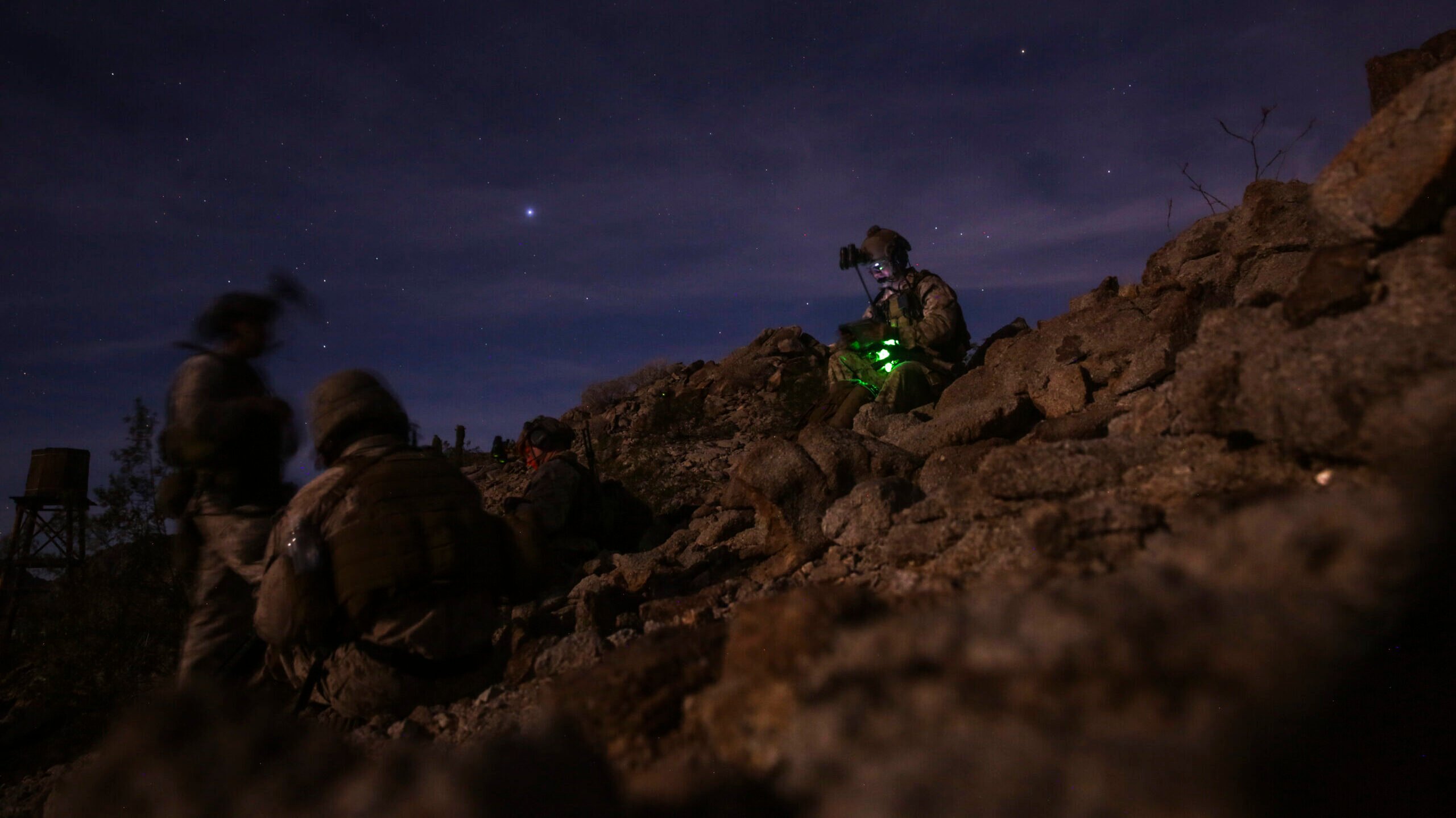
U.S. Marines with 2nd Marine Raider Battalion, Marine Raider Regiment set up communication during a night raid exercise at landing zone Dodo, Ariz., April 21, 2016. (U.S. Marine Corps photo by Lance Cpl. Zachary M. Ford, MAWTS-1 COMCAM/ Released)
MODERN DAY MARINE 2022: US Marine Corps Special Operations Command will stand up a second O-6 level operational headquarters to support a new operating concept as the service focuses on near-shore operations in a contested environment.
Col. Ian Fletcher, assistant chief of staff in the G-5/8 (Plans & Resourcing) and director of combat development and integration at MARSOC, said the “essence” of the new operating concept, called Strategic Shaping and Reconnaissance, is “that creating at the tactical edge… a unit that has the potential to be the joint and interagency” unit operating near the shore. The strategy, Fletcher said during a presentation at the Modern Day Marine exhibition in Washington, DC, would be important for the joint force’s multi-domain operations concept.
In a slide during the presentation, strategic sharping and reconnaissance was defined as “special reconnaissance, preparation of the environment, and the employment and synchronization of kinetic and non-kinetic effects across all domains and operational environments to enable the joint force.” Fletcher said that MARSOC is aiming to achieve initial operating capability for SSR by 2026.
RELATED: Lawmakers Wittman, Courtney push legislation for 31 amphibs for Navy’s fleet
The concept represents a shift from “heavy irregular warfare, direct action strike organization that we were designed for Afghanistan and Iraq, and moving into that competition space. That is where SOCOM is really pivoting itself towards today,” Fletcher said.
Fletcher said that MARSOC is about to move ahead with a force redesign that will see the command standing up a second O-6 level operational headquarters, with one focused on littoral special reconnaissance and the other on littoral irregular warfare.
Fletcher laid out seven capability areas MARSOC needs to invest in in order to successfully execute missions under the new concept: Operating in the Information Environment (cyber, space, info), all-domain command and control, multi-discipline intelligence, littoral information warfare, littoral mobility, littoral special reconnaissance and contested logistics.
“Those capability areas are those areas of material and non-material investment, solutions and development that we’re looking at [in Program Objective Memorandum 24] and beyond,” Fletcher said. “When you look at the programs, and taking the steps towards generating a coherent force offering, really, by ’26 those are the capability areas that we are focused on.”
Information and influence operations, he emphasized, were the “number one” capability area for MARSOC. The ability to create a “false sense of reality” for adversaries would give the US military a strategic advantage.
“This concept … is designed purposely to create physical access and systemic access for non-kinetic effects down at the tactical edge,” Fletcher said.
Within the littoral mobility category, Fletcher said that MARSOC was “exploring” investments in small and medium boats “in conjunction” with Naval Special Warfare Command.
“These are the activities that are allowing us to [have] awareness in all domains,” Fletcher said.






















